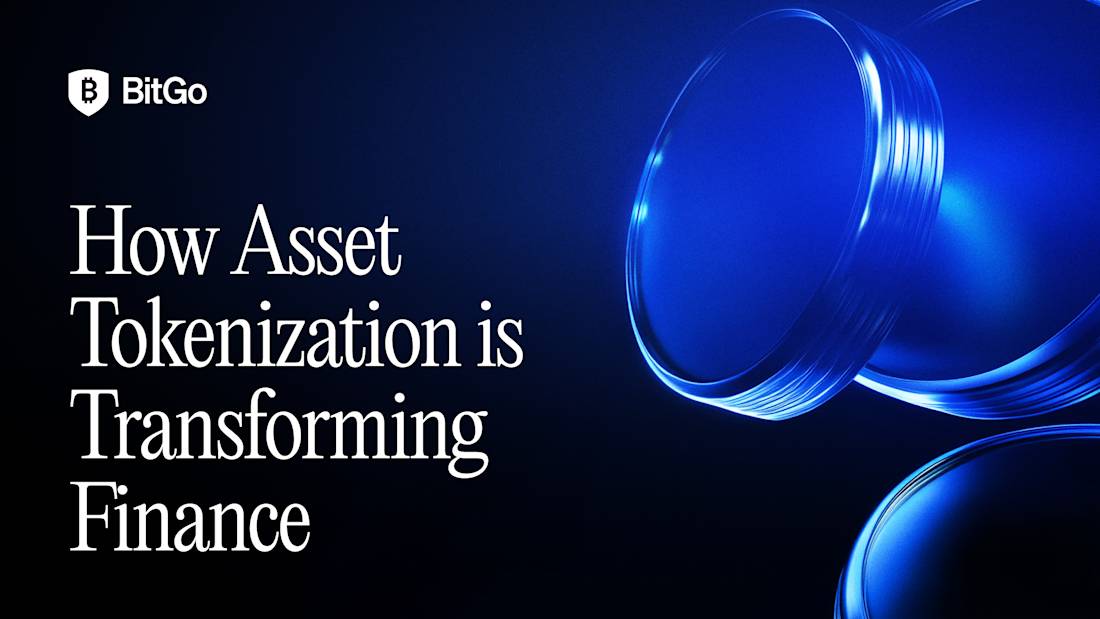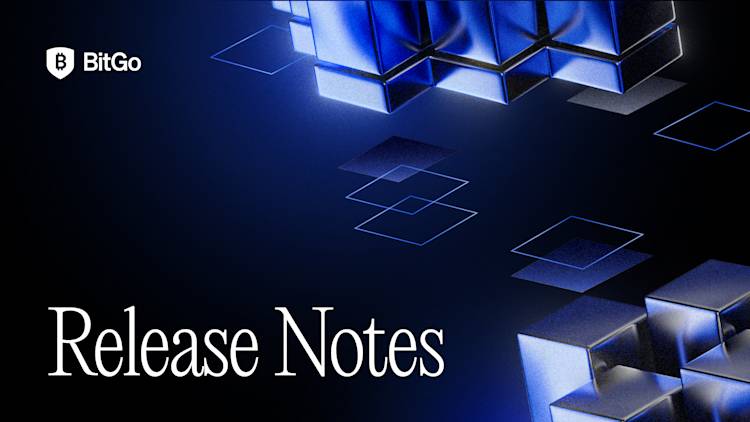Tokenization of digital assets is steadily moving from the margins to the mainstream of global financial markets. With tokenization, financial institutions and investors can efficiently manage asset ownership, transact and transfer assets, access diverse assets, and unlock new forms of liquidity.
Major financial companies like J.P. Morgan and BlackRock already use tokenization for settlements and fund management, respectively. As blockchain technology matures and tokenization adoption grows, applications will likely extend to real estate, private equity, credit, and beyond.
Here’s a closer look at how tokenization of assets works and how its evolution may disrupt traditional financial markets.
Key Takeaways
-
Digital asset tokenization is gaining traction with major financial institutions, not just fintech startups.
-
Tokenization can improve transparency, lower transaction costs, and make traditionally illiquid assets more accessible.
-
Projects from J.P. Morgan, BlackRock, Goldman Sachs, BNY, and UBS illustrate how fast adoption is moving.
-
Institutions need secure custody, scalable infrastructure, and internal readiness to support tokenized assets.
-
Tokenization is on track to become foundational to global financial infrastructure.
Institutional Adoption of Asset Tokenization
While the world of digital assets began with smaller startups, some of the world’s biggest financial companies have adopted the tokenization of digital assets. With enhanced efficiency, transparency, and transaction security, tokenization offers a range of valuable benefits.
-
J.P. Morgan: J.P. Morgan's Kinexys blockchain platform, formerly known as Onyx, launched in 2020. It facilitates asset tokenization and enables instantaneous cross-border payments.
-
BlackRock: The world’s largest asset manager introduced the BlackRock USD Institutional Digital Liquidity Fund (BUIDL) in March 2024. Issued in partnership with Securitize, the fund amassed nearly $3 billion in assets in its first year and trades on the Ethereum, Ethereum (BUIDL-I), Polygon, Avalanche, Optimism, Arbitrum, Aptos, and Solana blockchains.
-
Goldman Sachs: Investment bank Goldman Sachs participates in the Canton Network, a digital asset platform offering flexible settlement schedules, multiple asset types, and quick issuance of new securities. The network aims to connect traditionally disparate financial systems in a unified platform.
-
BNY: BNY's on-chain platform bridges digital and traditional assets on a single platform. Designed to support the full lifecycle of digital assets, it emphasizes real-time data access and integrated risk management to meet the needs of institutional clients.
-
UBS: UBS Tokenize is a full-service platform that turns regulated financial products into digital assets. It supports the creation, issuance, and custody of tokenized bonds, funds, and structured products. It emphasizes compliance and security and works across multiple blockchains.
These projects from financial industry leaders show that digital asset tokenization has surpassed fad status. It’s a growing part of our economy that may help shape the next generation of financial infrastructure.
The Business Case for Asset Tokenization
Why would prominent financial companies invest in digital asset tokenization initiatives?
Blockchain technology addresses longstanding inefficiencies in older systems, such as the U.S. Federal Reserve’s Automated Clearing House (ACH) for bank-to-bank transfers, the Society for Worldwide Interbank Financial Telecommunication (SWIFT) network for international wire transfers, and the Automated Customer Account Transfer Service (ACATS) for investment account transfers.
Tokenization provides near real-time transaction processing, low-cost transfers, and the security and transparency of a distributed ledger. As regulations develop and digital assets become more mainstream, it’s probable that more financial institutions, institutional investors, and individuals will participate in the digital asset marketplace. And while there are costs and risks associated with any new financial technology, the potential benefits of digital asset tokenization are too significant to ignore.
Considerations for Institutions Implementing Asset Tokenization
Adopting tokenization requires operational rigor across infrastructure, compliance, and custody. For institutions, that means preparing systems and teams to meet new technical and regulatory requirements head-on.
Here are three core areas that demand close attention.
Secure Custody
Some of the most significant risks in traditional financial systems include fraud and cybersecurity threats. With tokenized assets, those risks take new forms that require different risk management tools.
Custody wallets are highly secure solutions designed specifically for digital asset management. Regulated custody wallet providers follow strict regulatory standards, engage with external auditors, enforce multi-key access for withdrawals, and maintain sufficient insurance coverage to ensure safety for client funds.
Rapidly Evolving Laws and Regulations
Not all regulators move at the same speed, even within a single country. For example, in the United States, digital asset companies often must keep up with regulations from the Securities and Exchange Commission (SEC), the Commodity Futures Trading Commission (CFTC), and the Treasury Department’s Financial Crimes Enforcement Network (FinCEN), among other regulators.
For organizations working in multiple countries, keeping up with shifting rules can be difficult. Without a regulated custody partner, the burden of compliance falls squarely on the digital asset service provider.
Internal Readiness
Before diving into tokenization, companies need to take a hard look at their internal readiness. Do they have the right people in place to manage blockchain infrastructure? Are their systems set up to handle smart contracts and API-based reporting?
In many cases, a blended approach works best. Institutions might outsource what falls outside their expertise and invest in training their teams to handle the rest. That balance can help move faster without sacrificing control.
What’s Next for Tokenization in Finance
Digital asset tokenization is shifting from early adoption to real-world implementation. Financial companies are no longer simply exploring how blockchain technology could benefit their businesses and clients. They’re building products, setting up infrastructure, and preparing to integrate tokenized assets into their platforms for the long term.
Industry groups are working with regulators to develop secure, standardized frameworks. Government bodies are steadily passing legislation that will shape the future of the digital asset marketplace. As legislative clarity improves, risk and uncertainty will diminish, laying the groundwork for broader institutional participation.
The scope of tokenization is also expanding. Beyond funds, bonds, and real estate, it’s gaining momentum in areas like private credit, carbon markets, and alternative assets. As tokenization reaches across asset classes, it’s steadily becoming a standard way of doing business.
Firms that want to stay competitive should act now. That means building the right systems, forming the right partnerships, and preparing internal teams for digital asset transformation. Tokenization is quickly becoming a core part of how assets move and how value is stored.
The institutions that lean in now will lead what comes next. BitGo provides the foundation they can rely on to do it securely, at scale, and in full compliance.
FAQ
What is digital asset tokenization?
Digital asset tokenization is the process of turning ownership rights of real-world assets into digital tokens recorded on a blockchain. These tokens can represent anything from real estate and private equity to cash and treasuries.
How does digital asset tokenization work?
A non-fungible token (NFT) is created on a blockchain to represent a specific asset. Ownership, transactions, and records are tracked digitally, making transferring, dividing, or trading the asset securely and transparently easier. Legal contracts may be necessary, depending on the asset and ownership structure.
What are the advantages of tokenizing assets?
Tokenization can increase liquidity, reduce settlement times, lower transaction costs, and improve transparency. It also allows for fractional ownership, making high-value assets more accessible to a broader group of investors.
Are there risks involved in digital asset tokenization?
As with other financial products and services, digital asset tokenization carries some risks. Those include regulatory uncertainty, technology vulnerabilities, and custody concerns. Institutions must carefully manage compliance, security, and infrastructure to protect the assets and the tokens.
What are the use cases for digital asset tokenization?
Use cases include tokenized real estate, treasuries, private credit, funds, and even carbon credits or art. Tokenized real estate is being used in public and private markets to improve access, efficiency, and transparency.
Table of Contents
The latest
All NewsAbout BitGo
BitGo is the digital asset infrastructure company, delivering custody, wallets, staking, trading, financing, and settlement services from regulated cold storage. Since our founding in 2013, we have been focused on accelerating the transition of the financial system to a digital asset economy. With a global presence and multiple regulated entities, BitGo serves thousands of institutions, including many of the industry's top brands, exchanges, and platforms, and millions of retail investors worldwide. For more information, visit www.bitgo.com.
©2025 BitGo, Inc. (collectively with its parent, affiliates, and subsidiaries, “BitGo”). All rights reserved. BitGo Trust Company, Inc., BitGo, Inc., and BitGo Prime LLC are separately operated, wholly-owned subsidiaries of BitGo Holdings, Inc., a Delaware corporation headquartered in Palo Alto, CA. BitGo does not offer legal, tax, or investment advisory services. The statements contained herein are only intended for marketing and informational purposes and should not be interpreted as legal, tax, or investment advice. Please consult your legal,tax,investment, or other professional advisor for questions about your specific circumstances. Digital asset holdings involve a high degree of risk, and digital asset values may fluctuate on any given day. Accordingly, your digital asset holdings may be subject to large swings in value and may even become worthless. The information provided herein is not intended for distribution to, or use by, any person or entity in any jurisdiction or country where such distribution or use would be contrary to law, statute, or regulation. BitGo is not directing this information to any person in any jurisdiction where the publication or availability of the information is prohibited, by reason of that person’s citizenship, residence, or otherwise. The information contained in our press releases, blogs, and presentations should be considered accurate only as of the date of the press release, blog, or presentation. We disclaim any obligation to supplement or update the information in these press releases, blogs, or presentations, except as may be required by law. Product availability and client eligibility will vary by jurisdiction. Services listed may be provided by one of BitGo's affiliated entities.




